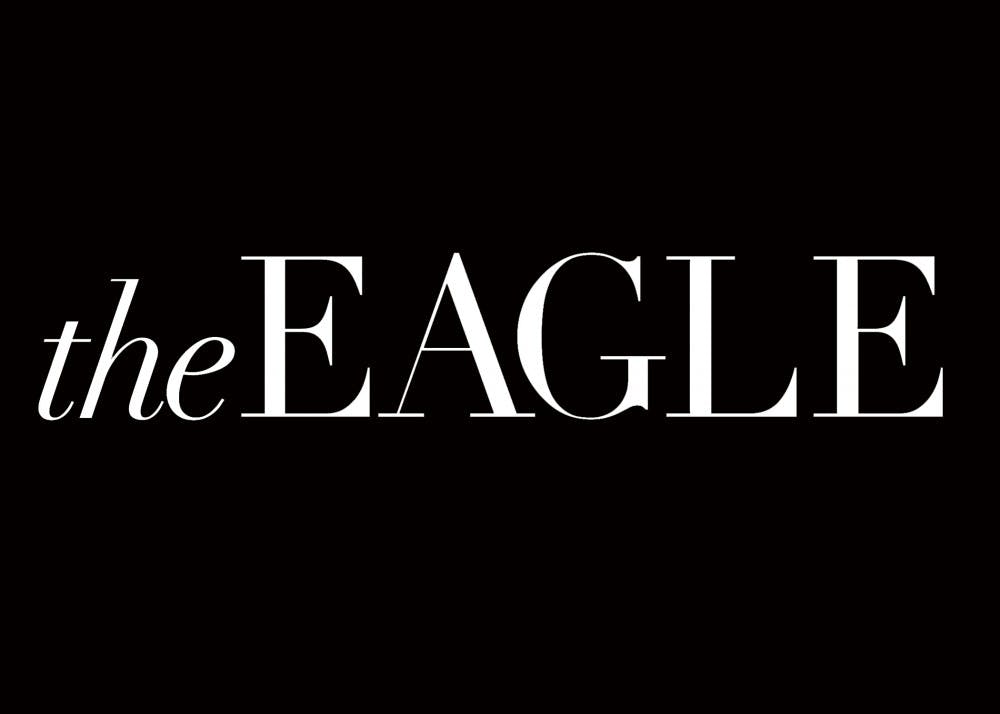On October 28, a group of approximately 120 protestors gathered outside of MGC, as previously reported by The Eagle. The protest was in response to the removal of an AU student from her campus apartment at the end of September by AUPD, and students aimed to demand justice for this student. The protest was organized by members of Black Lives Matter DC and The Future is Feminist to draw attention to the student’s conduct hearing that was allegedly happening at the same time. The protest began at MGC, then moved to East Campus, where the hearing was held, and then moved back again to MGC. The protestors occupied the front steps of MGC with the goal of preventing access in order to draw more attention to the incident and the University’s response.
Chants focused on advocating for the student in this case, and encouraged other students to rush the steps and join them. Notably, there was a moment when white demonstrators moved to the front of the crowd at the request of protest leaders, as protection for the black protestors. Between demands for justice, there was a moment of silence held and later protest leaders shared a list of demands to the University. The University has not made much information surrounding the incident public, citing privacy restrictions due to FERPA.
The student leaders who organized the protest said that there will be future to draw needed attention to yet another example of how far the University still has to go in addressing students’ concerns, especially those of students of color. While the details surrounding the inciting incident have not yet been confirmed, the University has stated the reason for the AUPD officers’ presence at the student’s on-campus apartments as being a wellness check. The University also stated that those involved followed emergency protocol.
This presents the central issue of the entire situation: students do not know what the procedures are in these situations. When you call AUPD during a panic attack, what will happen? For students who may have had CARE reports filed for them, when is a police presence involved? Who makes that decision? Perhaps most importantly, what are students’ rights to refuse care or other measures?
Student safety is supposed to be paramount, but students feel safe in different situations, especially depending on their identities. Without a cohesive, laid-out protocol that is easily accessible to students, they are not able to have the agency to make decisions about who or when to call in a crisis moment. For students in crisis, these moments matter. Without more detailed procedures and protocols explained, students cannot make the most informed choice about what will best make them comfortable and safe. There are whole communities on campus that would not feel safe with the presence of police, yet in many instances, the University would tell them to call 911.
The Counseling Center on campus, as most AU students know, is not effective in quickly helping students. When students don’t have information about emergency protocol or contact options, situations like these are bound to happen and may escalate further than intended by any parties involved.
To make better decisions for their own health, students need to hear from the University what will happen when they contact the Counseling Center, the Health Center, AUPD, or other offices, and what offices to contact and when instead of a list of phone numbers with little to no context. Even the classification of emergency and non-emergency numbers for AUPD begs the question: what constitutes an emergency? Is it students suffering from manic episodes or panic attacks that make them or their friends worry for their safety? Or is an emergency for AUPD only related to crime? Clarification on the role of these offices, and the training that makes AUPD qualified to deal with mental health issues, is needed for students.
This protest also put into sharp relief the discomfort of the University in dealing with student protests. There was little administrator presence at the protest itself, as there was no visit from Fanta Aw or discussion with the provost, as former provost Scott Bass did during protests after the 2017 hate crime on campus. Not only does this appear as if the University doesn’t respect the protests, but they may not recognize how students are reacting to this incident. The University’s ability to communicate on this is a challenge; however, this particular incident has not had the same level of communication as others. The lack of acknowledgement of how students may be feeling after watching the video is also troubling. Administrators should not just show up in students’ lives for photo ops and selfies; they should also be there for them in these difficult moments.
This protest was a reminder that these issues have not left campus, but rather, they continue to be a feature of every semester. Until the University explains protocols and procedures when students are suffering a mental health crisis, potentially unsafe and escalated situations will continue to arise. An email from Vice President of Campus Life and Inclusive Excellence Fanta Aw ensuring students they have AUPD and University protocols, without explaining more about what these are, does not reassure students. Without acknowledgement by the University about this, students will continue to feel ignored and the protests will not stop. It is past time for the University to learn how to handle these situations, because students are tired of dealing with them and the lack of support.
opinion@theeagleonline.com





